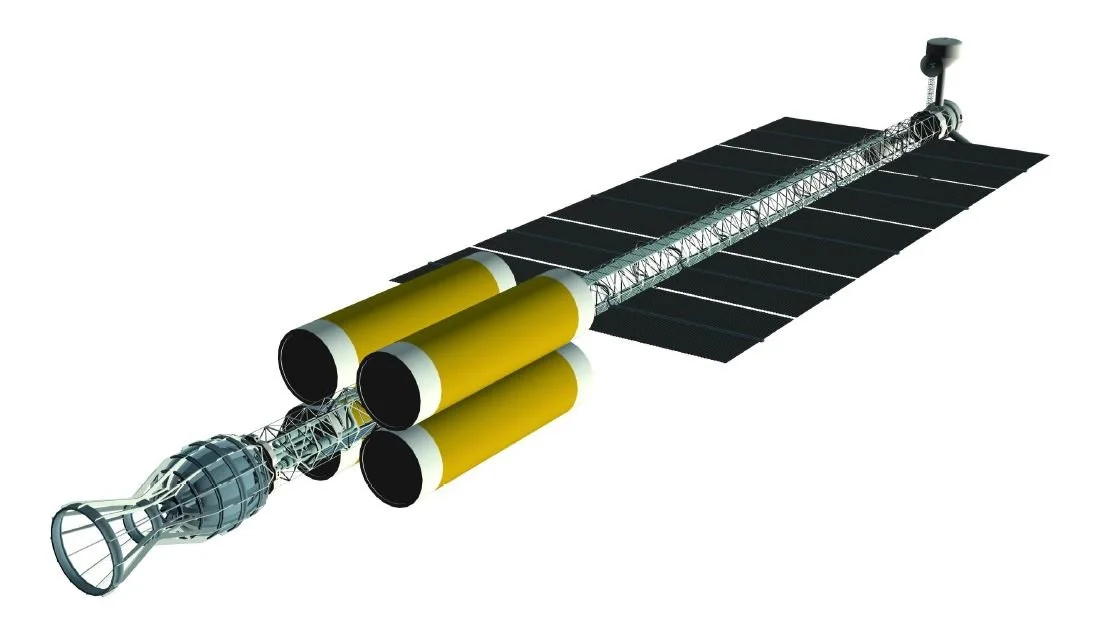by Kelvin F Long
I have recently been working on a mission concept for the outer planets to Jupiter and Saturn. This is based on an earlier NASA study called Discovery II which was driven by a spherical magnetic torus fusion engine (which itself is based on the earlier Discovery I from 2001 A Space Odyssey driven by a gas core nuclear fission Cavradyne engine). The difference is that the Discovery III is also an ICF driven engine. As with the NASA mission it is designed to carry a 172 tons artificial gravity payload and 6 - 12 astronauts, completing the mission to Jupiter at ~5 AU in around 118 days and the mission to Saturn at ~10 AU in around 212 days.
The Discovery III engine would be 26 MJ driver energy delivered to a target of 2.88 milli-gram fuel with an assumed laser efficiency of 7.69% with a peak intensity of 4.7e17 W/cm2. Preliminary calculations suggest that the ICF engine may only require half as much thermonuclear fuel mass when compared to the magnetic fusion engine (Discovery III versus Discovery II) but this research is ongoing. A paper will be submitted on these calculations to a journal shortly.
NASA Discovery II
ICF Driven Discovery III


